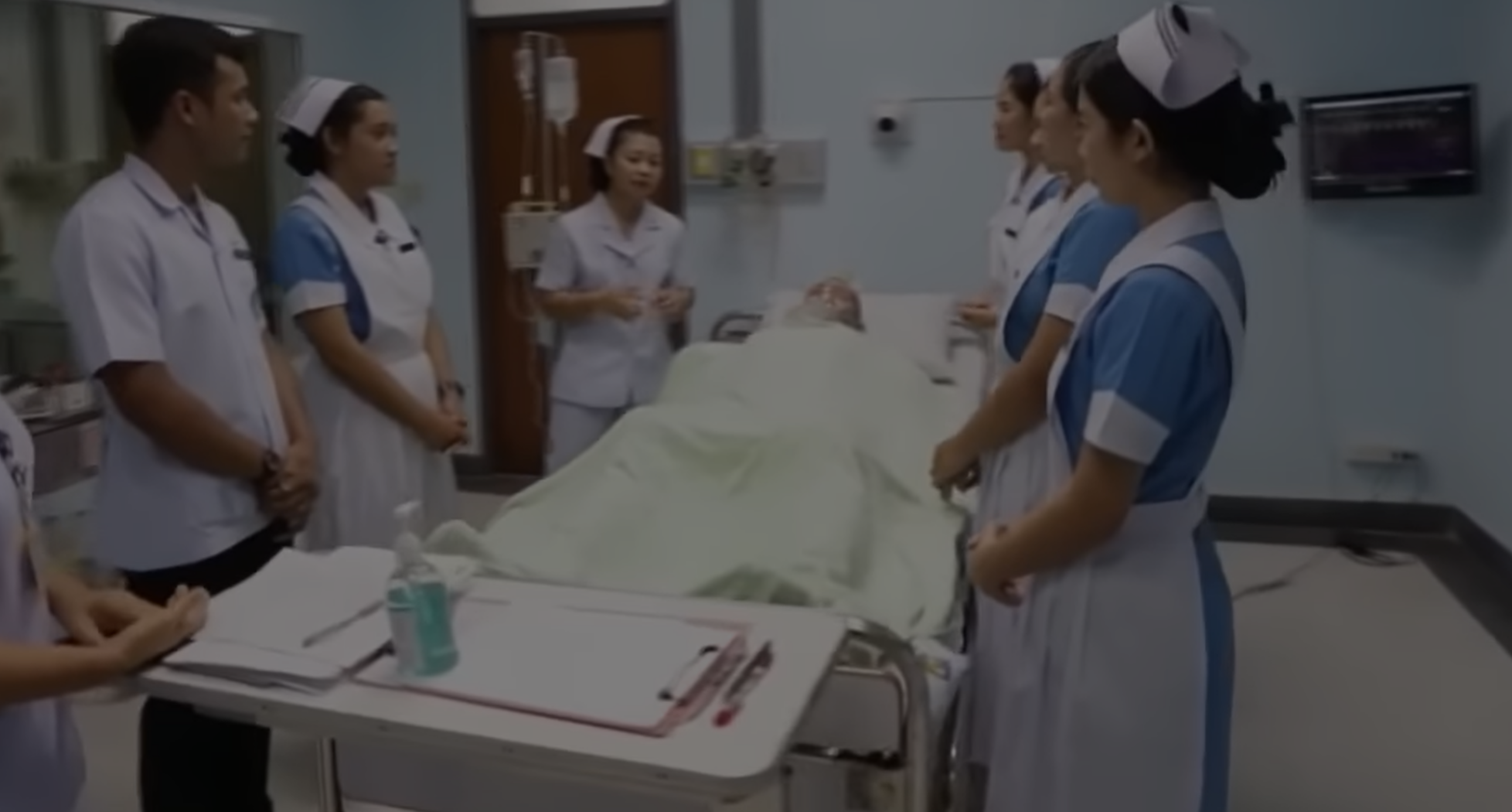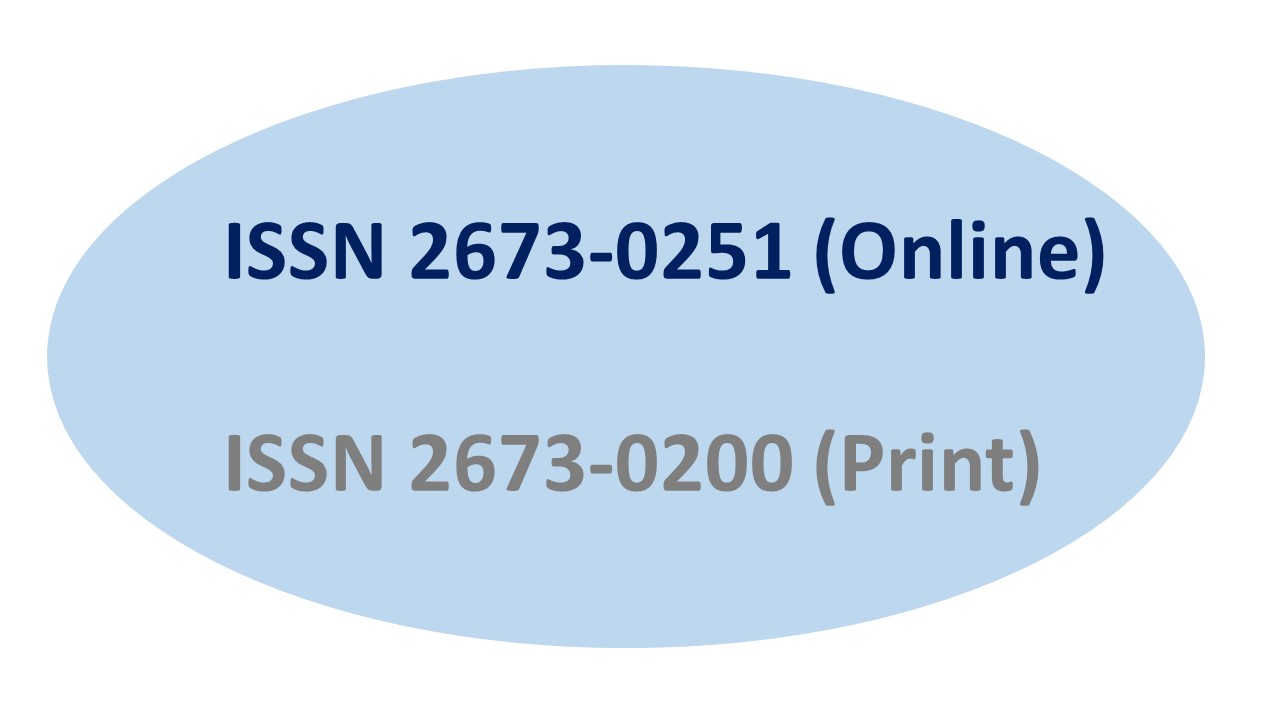Simulation-Based Learning for Second-Year Nursing Students Amid COVID-19 Pandemic: Knowledge Management Approach
Keywords:
Simulation-based learning, nursing students, knowledge management, nursing practicumAbstract
Simulation-based learning can improve nursing students' critical thinking skills and encourage nursing theory implementation. This article aimed to share experiences of managing course specifications of nursing practicum and presented how to use knowledge management processes, acquisition of knowledge, storage of knowledge, distribution of knowledge, and use of knowledge, to develop simulation-based learning during the Covid-19 pandemic. Course specifications and learner activities could be prepared for such a pandemic in a short period through knowledge management processes. Hybrid Simulation-Based Learning was used in the field experience in Adult Nursing Practicum 1 for second-year nursing students which was conducted from 13 September to 31 October 2021. The result showed that simulation-based learning could be the first choice of teaching method during the pandemic situation and insufficient vaccination yet. The outcomes for all learners after teaching by simulation-based learning were satisfactory. The knowledge in this article can be an example for nurse instructors to develop their teaching in the field of nursing practicum by using simulation-based learning to improve students' learning outcomes, and using knowledge management processes to create simulation-based learning guidelines.
References
Abulebda, K., Auerbach, M., & Limaiem, F. (2019). Debriefing techniques utilized in Medical simulation. [internet] [cited 2022 June 22].
Available from: https://europepmc.org/article/NBK/nbk546660
Amerjee, A., Akhtar, M., Ahmed, I., & Irfan, S. (2018). Hybrid simulation training: an effective teaching and learning modality for
intrauterine contraceptive device insertion. Education and Health, 31, 119–124.
Brown, W. J., & Tortorella, R. A. (2020). Hybrid medical simulation–a systematic literature review. Smart Learning Environments, 7(1), 1-16.
Burgess, A., van Diggele, C., Roberts, C., & Mellis, C. (2020). Teaching clinical handover with ISBAR. BMC medical education, 20(2), 1-8.
Conditions Centers for Disease Control and Prevention. (2021). Underlying medical conditions associated with high risk for severe COVID-
: information for healthcare providers. [internet] [cited 2022 July 2022]. Available from: https: // www. cdc.gov/
coronavirus/2019-ncov/hcp/clinical-care/underlyingconditions.html
de Souza Melo, A., da Penha Sobral, A. I. G., Marinho, M. L. M., Duarte, G. B., Vieira, A. A., & Sobral, M. F. F. (2021). The impact of social
distancing on COVID-19 infections and deaths. Tropical Diseases, Travel Medicine and Vaccines, 7(1), 1-7.).
Dousari, A. S., Moghadam, M. T., & Satarzadeh, N. (2020). COVID-19 (Coronavirus disease 2019): a new coronavirus disease. Infection and
drug resistance, 13, 2819.
Gonzalez, R. V. D., & Martins, M. F. (2017). Knowledge Management Process: a theoretical-conceptual research. Gestão & Produção, 24,
-265.
Harris, N., & Bacon, C. E. W. (2019). Developing cognitive skills through active learning: A systematic review of health care professions.
Athletic Training Education Journal, 14(2), 135-148.
Haughey, D. (2014). A brief history of SMART Goals [Internet]. [cited 2022 June 21]. Available from: https://www.Project
smart.co.uk/smart-goals.php.
Jeffries, P. R., Adamson, K. A., Rodgers, B. (2016). Future research and next steps. In Jefferies, P. R. (Ed.), The NLN Jeffries simulation
theory (pp. 51-54). Philadelphia, PA: Wolters Kluwer.
Kim, J., Park, J. H., & Shin, S. (2016). Effectiveness of simulation-based nursing education depending on fidelity: a meta-analysis. BMC
medical education, 16(1), 1-8.
Lateef, F. (2010). Simulation-based learning: Just like the real thing. Journal of Emergencies, Trauma and Shock, 3(4), 348.
McDermott, D. S., Ludlow, J., Horsley, E., & Meakim, C. (2021). Healthcare simulation standards of best practice pre-briefing: preparation
and briefing. Clinical Simulation in Nursing, 58, 9-13.
Nguyen, L. H., Drew, D. A., Joshi, A. D., Guo, C. G., Ma, W., Mehta, R. S., ... & Chan, A. T. (2020). Risk of COVID-19 among frontline healthcare
workers and the general community: a prospective cohort study. medRxiv: the preprint server for health sciences. DOI:
1101/2020.04.29.20084111.
Peate, I., & Brent, D. (2021). Using the ABCDE approach for all critically unwell patients. British Journal of Healthcare Assistants, 15(2), 84-
Shin, H., Sok, S., Hyun, K. S., & Kim, M. J. (2015). Competency and an active learning program in undergraduate nursing education. Journal
of Advanced Nursing, 71(3),591-598.
Thanaroj, S., & Sueamak, W. (2019). Development of instructional package on the Topic Nursing Teamwork with Simulation-based
learning for nursing learners). Journal of Health Research and Innovation. Journal of Healt

Downloads
Published
Issue
Section
License
Copyright (c) 2022 International Journal of Public Health and Health Sciences

This work is licensed under a Creative Commons Attribution-NonCommercial-NoDerivatives 4.0 International License.
If the manuscript is accepted for publication, copyright of the article shall be assigned to the IJPHS. After acceptance of a manuscript, the authors will be requested to complete a copyright transfer agreement form






